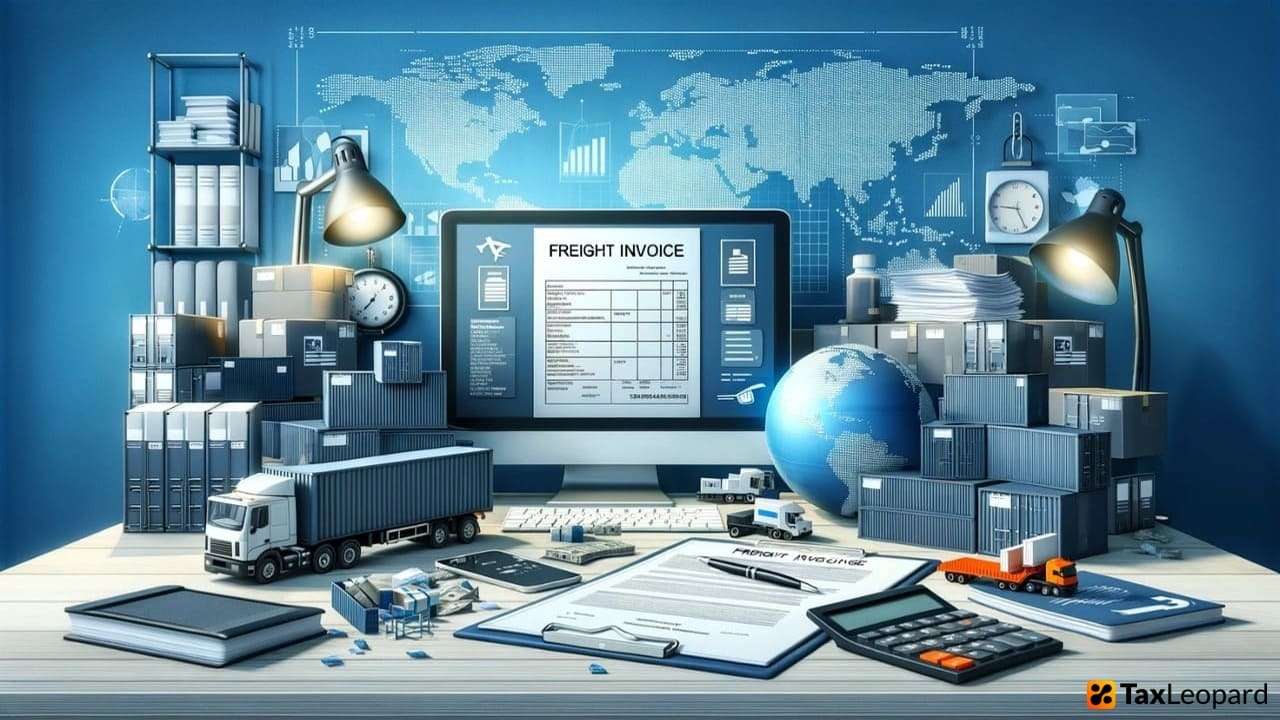Freight invoicing is an integral component of the logistics and transportation sectors. It encompasses the process of creating bills for the shipment of goods, detailing the charges for transportation services provided by carriers. This guide delves into the nuts and bolts of freight invoicing, exploring its significance, the steps involved, common challenges, and best practices. It’s designed to offer a comprehensive understanding, whether you’re a seasoned logistics professional or new to the field. The guide aims to provide clarity and insight into the intricate world of freight invoicing, a crucial element in the global supply chain.
Introduction to Freight Invoicing
Freight invoicing is a critical aspect of the logistics and transportation industry. It involves the generation of bills for shipping services provided by freight carriers. These invoices detail charges for transporting goods from one location to another, encompassing various fees such as fuel surcharges, weight charges, and additional service fees. Accurate freight invoicing is vital for both the carrier and the client, ensuring clear communication and proper financial tracking. This process not only facilitates smooth business operations but also helps maintain transparency in the logistics chain.
The Process of Freight Invoicing
8 Steps to Follow:
- Transportation of Goods: The process begins with the actual transportation of goods. Carriers move products from the sender to the receiver, adhering to agreed-upon terms.
- Documentation of Services: Upon completion of the transportation, the carrier documents all services provided. This includes recording distances traveled, the weight of goods, and any special services rendered.
- Calculation of Charges: The carrier calculates the total charges based on the documented services. Distance, weight, and additional services like expedited shipping contribute to the final cost.
- Invoice Generation: Using the calculated charges, the carrier generates an invoice. This invoice itemizes all costs, providing a clear breakdown of charges for the client.
- Invoice Review: The client reviews the invoice for accuracy. They check for any discrepancies in the listed services or charges.
- Dispute Resolution (if necessary): If there are discrepancies, the client and carrier engage in a dispute resolution process. This involves clarifying any misunderstandings or errors in the invoice.
- Payment Processing: Upon agreement on the invoice, the client processes the payment. This marks the completion of the freight invoicing cycle.
- Record Keeping: Both parties keep records of the invoicing for future reference, compliance, and financial tracking.
Key Components of a Freight Invoice
A freight invoice is a detailed bill that encompasses several crucial components to ensure transparency and accuracy in billing. Firstly, it includes the shipper and receiver’s information, such as names and addresses, vital for identifying the transaction parties. The invoice number and date are essential for tracking and record-keeping purposes. Freight invoices also detail the description of the goods, including type, quantity, and weight, which are crucial for calculating charges. The services provided, like transportation, fuel surcharges, and any additional services, are itemized with corresponding charges. Payment terms, including due date and accepted payment methods, are clearly stated, guiding the payment process. Lastly, any relevant notes or special instructions related to the shipment are included, providing additional context or requirements for handling the goods.
Types of Freight Invoices
- Prepaid Invoice: This is issued when the shipper pays for the freight charges. It’s common when the shipper maintains control over the shipping costs.
- Collect Invoice: In this case, the receiver is responsible for the freight charges. The sender sends the invoice to the receiver, who pays the carrier directly.
- Third-Party Invoice: When neither the shipper nor the receiver is responsible for the freight charges, a third party, usually a logistics company or broker, receives the invoice.
- Consolidated Invoice: This is used when multiple shipments are combined into one invoice. It simplifies the billing process for shippers who have numerous shipments over a period of time.
- Electronic Invoice: With the rise of digitalization, electronic invoices are becoming increasingly common. They are sent and received electronically, offering a faster and more efficient process.
Each type of freight invoice caters to different shipping arrangements and parties involved, ensuring flexibility and convenience in the freight invoicing process.
Understanding Freight Rates and Charges
How Costs are Determined
Freight rates and charges are pivotal in the logistics industry, reflecting the cost of transporting goods. These rates are determined based on several factors. The distance between the origin and destination is a primary factor; longer distances generally entail higher costs. The weight and volume of the goods also significantly impact the rates, with heavier and larger shipments costing more. The nature of the goods, especially if they require special handling or are hazardous, can increase the rates.
Additionally, the mode of transportation, whether it’s air, sea, or land, influences the cost, with each mode having its pricing structure. Market demand and fuel costs are other dynamic factors that can cause fluctuations in freight rates. Understanding these elements is crucial for businesses to manage logistics costs effectively.
The Role of Freight Invoicing in Logistics Management:
Integration with Supply Chain
Freight invoicing plays a crucial role in logistics management, especially in its integration with the supply chain. Accurate and efficient invoicing ensures a seamless financial flow, which is essential for maintaining a robust supply chain. It provides a detailed record of transportation costs, aiding businesses in financial planning and budgeting. This transparency in costs helps in analyzing and optimizing logistics operations.
Moreover, freight invoicing is often integrated with supply chain management systems. This integration allows for automated data exchange, reducing the chances of errors and enhancing operational efficiency. It also facilitates better communication between shippers, carriers, and clients, ensuring everyone is informed about the logistics costs. Effective freight invoicing, therefore, not only streamlines financial transactions but also supports the overall efficiency of supply chain management.
Common Challenges in Freight Invoicing
Freight invoicing often encounters several challenges that can disrupt the efficiency of logistics operations.
- Inaccuracies in Billing: Commonly, discrepancies in weights, dimensions, and services lead to incorrect charges. Addressing this requires rigorous verification of data before invoicing.
- Complexity of Tariff Structures: The diverse and complex tariff structures in freight transportation can lead to confusion. Simplifying tariff structures and ensuring clear communication can mitigate this issue.
- Delayed Invoices: Late invoicing disrupts cash flow and client relationships. Implementing automated systems can help with timely invoice generation.
- Dispute Resolution Delays: Disputes over invoices often take time to resolve. Establishing a clear, efficient dispute resolution process is crucial.
- Compliance Issues: Staying compliant with changing regulations is challenging. Regular training and updates on regulatory changes are essential.
- Technological Challenges: Outdated systems hinder efficient invoicing. Investing in modern invoicing software can streamline the process.
By identifying and proactively addressing these challenges, businesses can enhance the accuracy and efficiency of their freight invoicing processes.
Best Practices for Efficient Freight Invoicing
To optimize freight invoicing, businesses should adopt certain best practices:
- Implement Automated Invoicing Systems: Automation reduces errors and speeds up invoicing.
- Regularly Update Tariff Information: Keeping tariff information current ensures accurate billing.
- Maintain Accurate Records: Detailed and organized record-keeping facilitates easier invoice generation and dispute resolution.
- Train Staff on Compliance and Updates: Regular training ensures staff are aware of regulatory changes and best practices.
- Use Clear and Detailed Invoices: Invoices should be easy to understand, with a clear breakdown of charges.
- Establish Efficient Dispute Resolution Mechanisms: Quick resolution of disputes maintains good client relationships.
- Leverage Technology for Data Verification: Using technology for data verification can significantly reduce inaccuracies.
- Maintain Open Communication with Clients: Regular communication with clients helps prevent misunderstandings and builds trust.
Adhering to these practices, businesses can significantly enhance the efficiency and accuracy of their freight invoicing, leading to smoother operations and improved client satisfaction.
Conclusion
Freight invoicing is not just about generating bills; it’s a critical process that ensures transparency and efficiency in the transportation of goods. This guide has covered the essentials of freight invoicing, from its basic concept to the best practices and common challenges faced in the process. As you reflect on the information presented, consider how the evolution of freight invoicing might impact global trade dynamics. What do you think the future of freight invoicing looks like in an increasingly digital and interconnected world?
FAQs
1. What exactly is freight invoicing?
Freight invoicing is the process of creating and issuing bills for transportation services provided by freight carriers. It includes details of charges for shipping goods.
2. Why is freight invoicing important in logistics?
It’s crucial for ensuring accurate billing, maintaining transparency in transportation costs, and facilitating smooth financial transactions between shippers and carriers.
3. What are the key components of a freight invoice?
A typical freight invoice contains details like shipment weight, distance traveled, type of goods, and charges for additional services, if any.
4. How does technology influence freight invoicing?
Modern technology, like automated invoicing systems, improves accuracy, speeds up the process, and helps in managing complex tariff structures effectively.
5. What are the common challenges in freight invoicing?
Challenges include inaccuracies in billing, complex tariff structures, compliance issues, and delays in invoice generation or dispute resolution.




